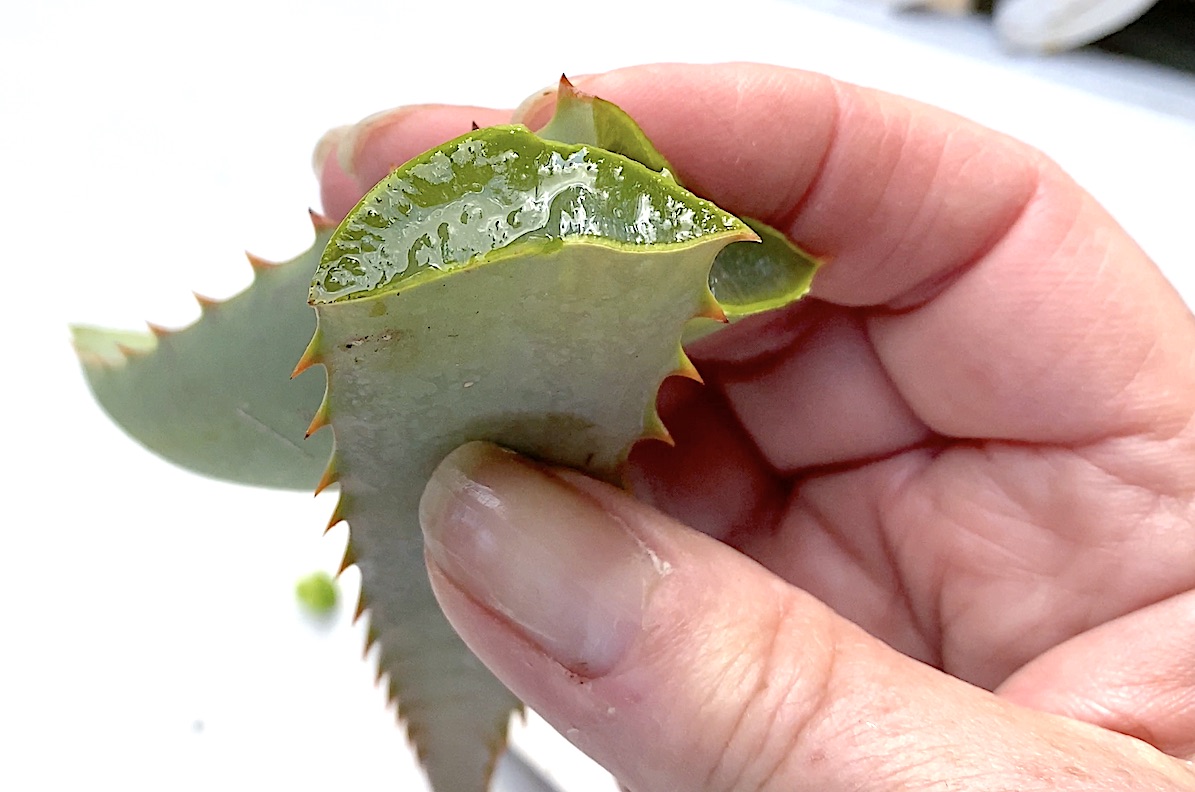
What Makes Succulents SUCCULENT?
What Makes Succulents SUCCULENT? In my new video of the same name, I rank common succulents 1-to-10 on a "Juiciness Scale." Slicing and squishing may seem unkind, but there's method to my madness. Become a better plant parent by learning the "how's" and "why's" of these lovable chubby plants. On this page you'll discover the fascinating Science of Succulence: how leaves, skin, roots and more make succulents, well, succulent---as well as astonishingly efficient.
The Science of Succulence
Succulents come from climates with low rainfall, strong sun and low humidity. In regions where thin-leaved plants would quickly shrivel, succulents survive---even thrive. The key is the quality of succulence: juicy, moisture-filled leaves that the plants draw on during hot, dry spells. Depending on the time of year and the variety, a succulent's moisture content may be as high as 95%.
Smart leaves
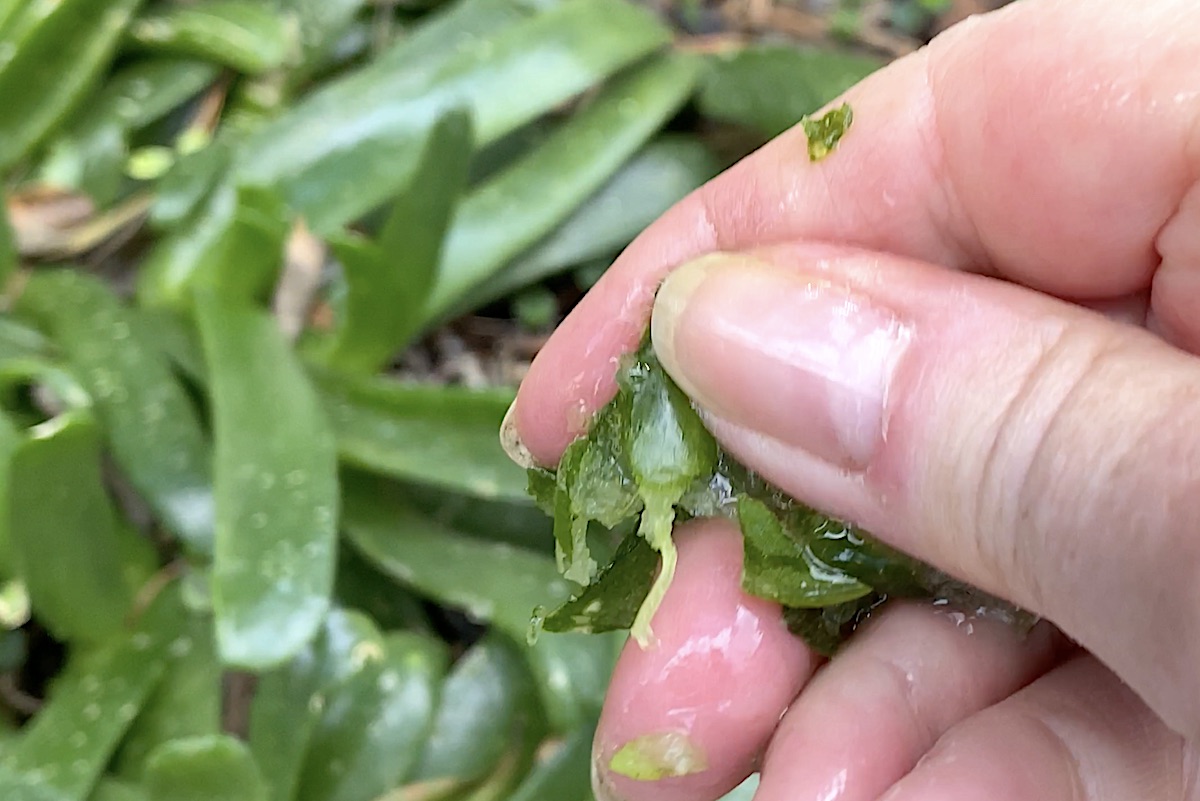
Glottiphyllum linguiforme (from the video)
Succulent leaf cells expand during rainy weather and shrink during drought. Certain varieties such as aloes also contain a gelatinous goo (mucilage). Although thick leaves mean less light reaches the plant for photosynthesis (chlorophyll + sunlight = energy for growth), that's OK because succulents are from climates with few cloudy days. In fact, some succulents further shade themselves with spines or filaments, or have a powdery coating that deflects UV light.
Waxy skin
The thick, waxy skin of succulents has comparatively few surface openings (stomata) that enable gas exchange (transpiration) with surrounding air. This minimizes evaporation and ties in with crassulacean acid metabolism (CAM), which makes succulents---in particular elephant's food (Portulacaria afra)---renowned for their ability to scrub harmful carbon from the atmosphere. Learn more.
The role of roots
Generally a tap root anchors a succulent, and it sends delicate roots laterally just below the soil surface. These shallow roots absorb even small amounts of rain and irrigation. Roots of succulents may contract during dry spells to avoid desiccation, then regrow when rains return.
Regional adaptations
Succulents are nothing if not smart! The way they deal with hostile environments is amazing. Here are two examples.
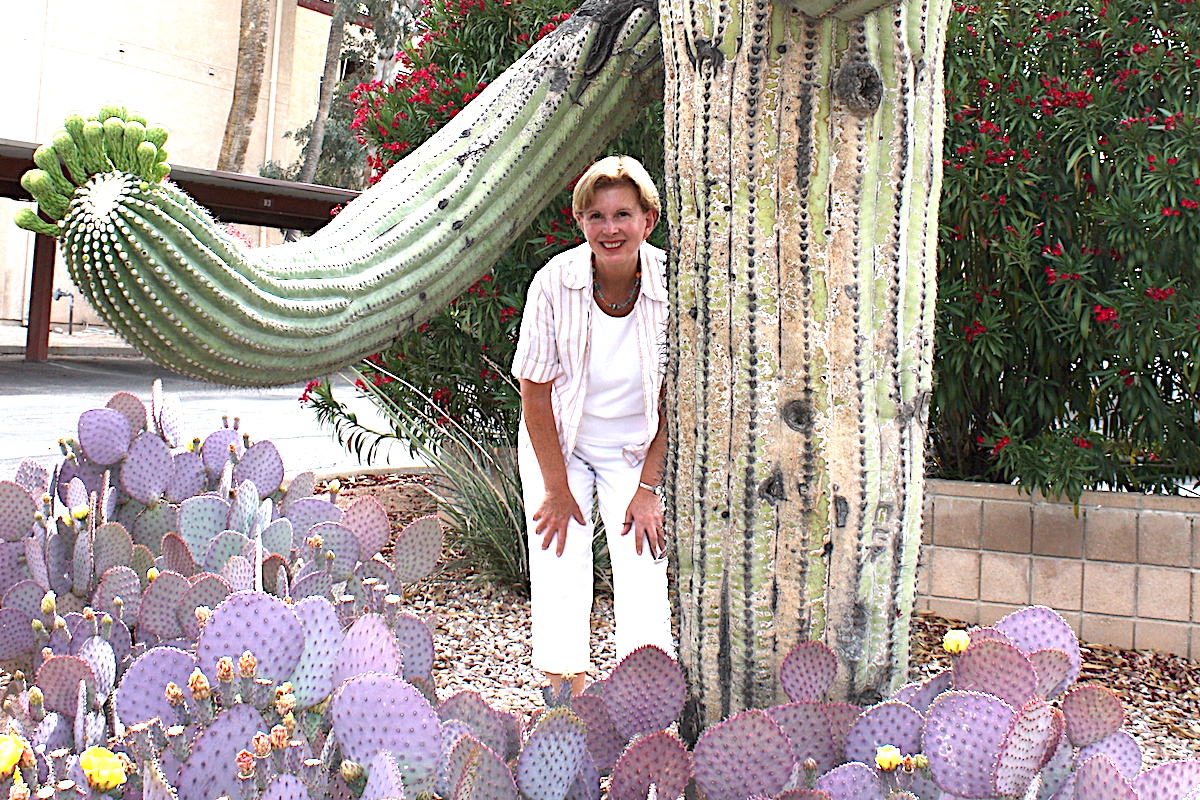
Yours Truly with a saguaro cactus in Tucson
Ribbed cacti of the desert Southwest expand during seasonal rains, then gradually shrink during periods of intense sun, high heat and low humidity. Such moisture depletion deepens surface "valleys," serving to shade the plant and lessen its exposure to the elements.

Lithops have patches of translucent tissue
In arid regions of Africa, certain small succulents have translucent tissue at their leaf tips. These dots, fissures or windows let sunlight enter plump plants that are buried up to their necks to avoid being eaten or sun-scorched. “Living stones” such as lithops as well as certain haworthias come to mind, but my favorite is Fenestraria (baby toes)---partly because the Latin name means “windows.”
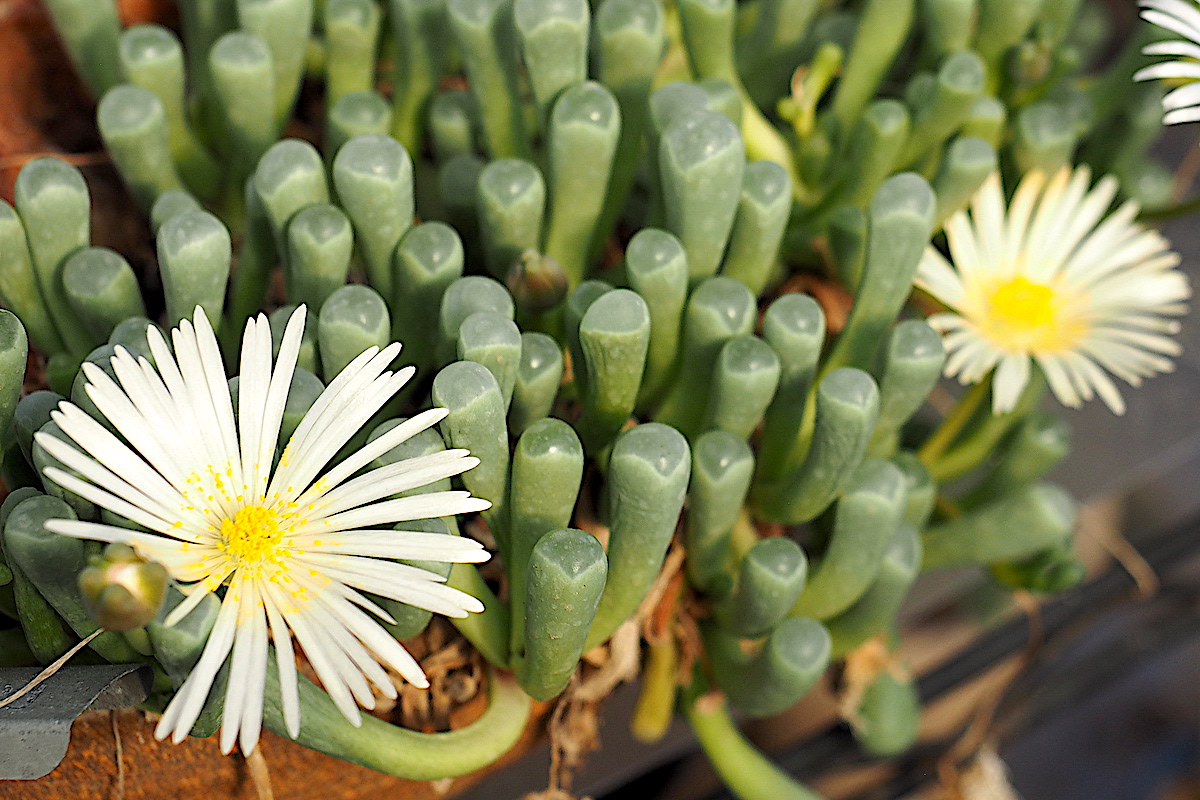
Fenestraria aurantiaca (baby toes) has windowed tips
Related info on this site
How Succulents Combat Global Warming
When you grow succulents in your garden, you’re helping combat global warming. The plants are especially efficient at scrubbing carbon dioxide from the atmosphere. It has to do with
Did Succulents Protect These Homes from Wildfires?
Southern CA homeowners in Rancho Santa Fe and Bonsall say succulents protected their homes during two different wildfires. In each case, nearby homes burned to the ground.

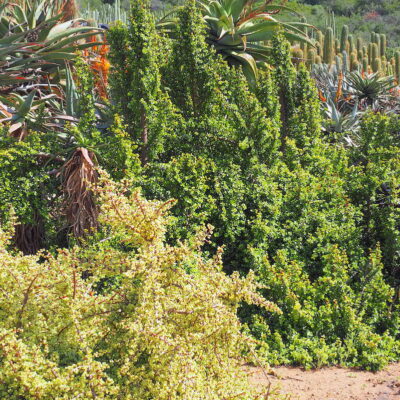
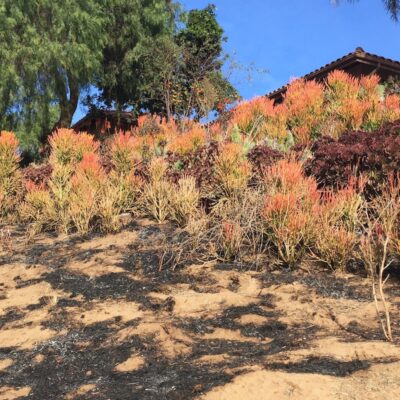
Wow! Your articles are educational AND entertaining. It’s difficult (and wrong) to take succulents for granted, when you provide such interesting information about them. Thanks!
Aw, Matt, you’re such a love! And YOU have the BEST blog on exploring New Mexico on horseback. I’ll never forget meeting and interviewing you for Sunset back in the ’90s at your marvelous adobe ranch home near San Diego, with its retro (mid-century) succulent garden.
Excellent article! Short and to the point and with great photos.
Thank you Steve!
You are a wealth of information on succulents and cacti and a talented photographer! Although you had help with the photo of you and the saguaro, it is a beautiful shot! I wonder if the saguaro is photo bombing you or are you photo bombing the saguaro?! 🙂
Thanks, Isabel! I’m the worst subject for photos because I’m never satisfied. “Here, take it again,” I say to my husband after looking at a shot he just took. “Only this time I want my hair backlit, don’t shoot straight up my nose, and try to get my left profile, OK? Oh! And zoom in more, but be sure you include (yada, yada).” Poor man, he actually winces when I ask him to take my photo.